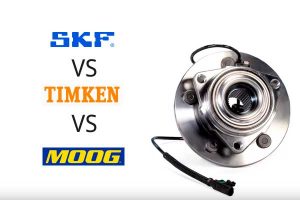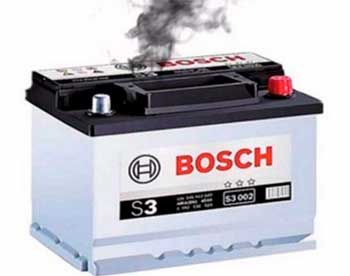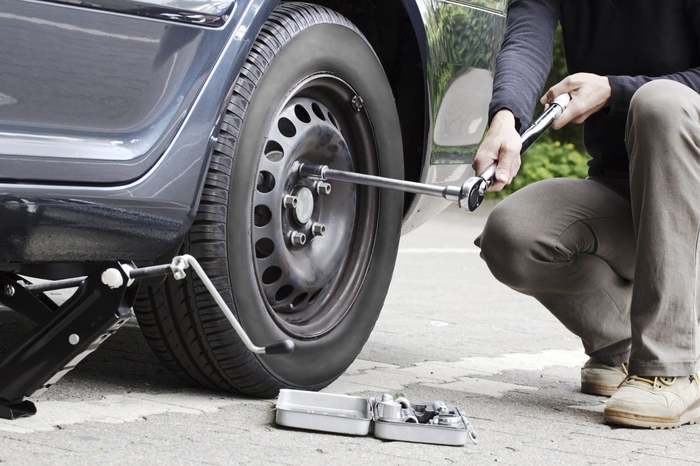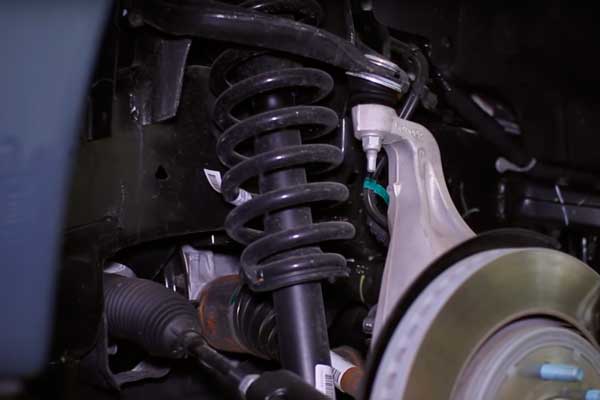 The main difference between SKF vs Timken vs MOOG is that SKF is the cheapest, while MOOG is the most expensive. SKF has a 3-year warranty, while Timken has a 90-day warranty. MOOG has a 3-year warranty. Timken has a single power cable, while SKF has two. Finally, Timken comes with rubber seals inside the bearing to prevent debris from getting in and causing friction, while both SKF and MOOG have exterior rubber seals.
The main difference between SKF vs Timken vs MOOG is that SKF is the cheapest, while MOOG is the most expensive. SKF has a 3-year warranty, while Timken has a 90-day warranty. MOOG has a 3-year warranty. Timken has a single power cable, while SKF has two. Finally, Timken comes with rubber seals inside the bearing to prevent debris from getting in and causing friction, while both SKF and MOOG have exterior rubber seals.
In this article, we will compare SKF vs Timken vs MOOG products that combine the wheel bearing and hub in one convenient package since these parts will often go bad at the same time.
We will attempt to determine which one of these three brands is the best and to answer any questions that you might have.
Of all your car’s components, the wheels are probably the ones that take the most wear and tear. After all, these are the parts that allow the car to move, and they are always in motion. They also have to deal with the effects of frequent starts and stops, which produces more wear and tear via the grabbing action of the brakes.
That’s why it is important to take care when choosing your next wheel bearing or hub.
SKF versus Timken versus MOOG wheel bearings
1. Timken SP500300 – The Convenient One
2. MOOG 515046 – The Fanciest One
3. SKF BR930502 – The Toughest One
Let’s take a look at three different wheel bearing/hub assemblies from three of the world’s most well-known manufacturers.
1. Timken SP500300 – The Convenient One
Timken is one of the oldest and most respected suppliers of steel bearings in the world. Timken SP500300 will give us a chance to see what else they can do. Timken wheel bearing is pretty well-designed overall and has no thin or flimsy parts to break under heavy use. We really like the fact that this thing has only one cord. This means less hassle during installation and less chance of a cable coming loose and dragging on the road.
We also really like the stabilizer feature. If you don’t know what that is, take a look at the extra hole in the circular plate. This threaded hole is used at times when you need to keep the wheel from turning. When it’s time to break a hub nut loose, it is vitally important to hold the part in place for better leverage. Under normal circumstances, this process requires a second person to put their foot on the brakes. However, this model allows you to screw a bolt into place that will keep the entire assembly from moving.
Speaking of the bolts, the lug bolts on this thing are relatively easy to remove, as they are situated around a triangular piece. You might have to turn the wheel slightly, but the lug bolts should come out easily. This is also the least expensive of our three products.
There are a few problems here, though. First off, the warranty only lasts for 90 days, and it only covers manufacturer defects. As automotive part warranties go, that is not very nice at all. We can also look at the bolts and see that the coating is already rubbed off in certain places. When you see gaps in the coating of a brand-new product, something is wrong. It indicates that the whole part might not be properly coated. Worst of all, the rubber seal on this part is external rather than internal, making it harder to install and more prone to breakage.
- Only one cord to mount
- Threaded stabilizer hole
- Relatively cheap
- Lug bolts are easy to remove
- Bolts aren’t well-coated
- Seal is external rather than internal
- Warranty only lasts 90 days
2. MOOG 515046 – The Fanciest One
A 3-year warranty backs MOOG 515046 with pretty generous terms, and that helps a lot.
We can look at this part and see that it was made with durability in mind, as the coating appears to be quite thick. When doing a scratch test, we found that this one was very hard to scratch. They applied this same idea to the power cable, making sure that it is encased in an extra layer. This is great because it helps to prevent the destruction of the cord through pulling or heat.
We really like the sealed center hole, as this removes any chance of finding metal shavings in the bearing. Sometimes, parts like these will have minuscule shavings of steel in the gaps of the bearing, and this will create extra friction and reduce the life of the product. The only downsides we see come from the fact that this part is a little more expensive, and the fact that the lug bolts are a little bit hard to remove.
- 3-year warranty
- Cord is thickly coated for better durability
- Thickly coated
- Center hole is sealed
- Hard to remove lug bolts
- Most expensive on our list
3. SKF BR930502 – The Toughest One
SKF BR930502 looks like a thick and durable beast at first glance, and its performance seems to match that look.
It has the thickest coating of all our choices, and so it will probably resist rust very effectively. According to the manufacturer, it is also designed for superior heat resistance, which can only be a good thing.
On the downside, this product has two power cables instead of one, and that makes installation slightly more difficult. It’s also one more component that can break under duress. Also, the holes that are used to bolt this thing to the axle are surrounded by only a thin ring of metal, creating a durability problem.
- Thick and durable construction
- Internal seal for extra safety
- Most thickly coated of our three products
- Designed for superior heat resistance
- Two power cables
- Bolt-on location is not very well-reinforced
SKF vs Timken vs MOOG Final Verdict
All of these are fine products that should serve your vehicles well. However, the MOOG hub bearing assembly is probably the best product on this list.
We say this because it doesn’t have any significant downsides other than its price, which is only a little higher than the others.
MOOG also had the best warranty and a very durable design.
Buyer’s Guide And FAQ
When choosing a wheel bearing/hub assembly, there are several things that you should consider. First of all, you want to look at the warranty. For a part that takes as much wear and tear as this one, a good warranty is essential. Any manufacturer that does not stand behind their products is a company that doesn’t deserve your business.
You should also consider the coating of steel. There is no easy way to determine the exact quality of the steel itself, but you can take a look at the coating of the metal to see how well-protected the product may be. Uncoated steel will quickly rust, so it’s important to choose one with a thick and strong coating that will last a long time.
You should also consider the lug bolts and where they are located. In many cases, lug bolts will break due to strain on the vehicle or impact. When that happens, it makes no sense to replace the whole part. That means you will need to buy a lug bolt or two and switch it with the broken ones. However, some wheel/hub assemblies make the lug bolts very difficult to access. They have to be removed from the backside, and there is often not enough clearance to get them free. As such, you should choose an OE part that gives you (or your mechanic) enough clearance to get the job done.
You should also take a look at the rubber seal on the backside of the part. This is the point where the whole wheel hub assembly locks into place and represents a natural weak spot. If this seal fails, your axle grease will begin to leak, and that could lead to a catastrophic lock-up while the car is in motion. In fact, the lack of lubrication can even cause axles to snap.
Finally, you should look at the placement of the electrical cords. All wheel bearing assemblies will contain a sensor or two, and that means they have to be plugged into the car’s electrical system. Of course, these cords are not always conveniently positioned. Since they cannot be allowed to hang loose and possibly drag on the road, these cables must be secured well, and you should think about that process before purchasing one of these aftermarket parts.
1. Are MOOG wheel bearings made in the USA?
Some of them are, and some of them are not. MOOG operates factories in quite a few countries (including North America, Europe, Asia and China), and so yours might have come from any of them.
2. Does MOOG have a lifetime warranty?
MOOG offers a limited lifetime warranty, but not for all vehicle parts. The lifetime warranty is only available for steering components like ball joints, U-joints, and tie rod ends. However, wheel bearings and hubs are covered by a 3-year warranty against manufacturer defects.
3. Where are SKF bearings made?
SKF is the world’s largest manufacturer of steel bearings. SKF’s distribution network is vast, spanning 108 production plants in various countries across the globe. This allows them to maintain a leading position in the steel bearing market.
4. Who owns SKF bearings?
SKF is owned by a holding company called Foundation Asset Management AB. This company also owns a number of other prominent Swedish companies.
5. Where are Timken bearings made?
The company is headquartered in North Canton, Ohio. However, they have manufacturing operations in 33 different countries, so your bearings could have been made in any of them.
6. Who owns Timken?
Like most corporations, Timken is controlled by a board of directors, each of whom owns a certain share of the company. At this time, the biggest shareholder is John Timken, the grandson of company founder Henry Timken.
7. Should I replace both wheel hubs?
Not necessarily. Although it is recommended to buy wheel bearings in pairs, a lot of people don’t do so. They don’t always wear evenly, so you might need only one.
8. Can you drive a car with a bad wheel bearing?
Yes, but it’s not a good idea. A car with a bad wheel bearing will make a lot of noise and may affect your ability to turn sharply. Eventually, the wheel can even fall off the axle.
Conclusion
After looking at all three brands, it is clear that SKF is the best option. It is the cheapest of the three, and it also has a longer warranty. Additionally, its products come with features that the other two brands do not have, such as rubber seals inside the bearing to prevent debris from causing friction. If you are in the market for a new wheel bearing or hub, SKF is the way to go.



